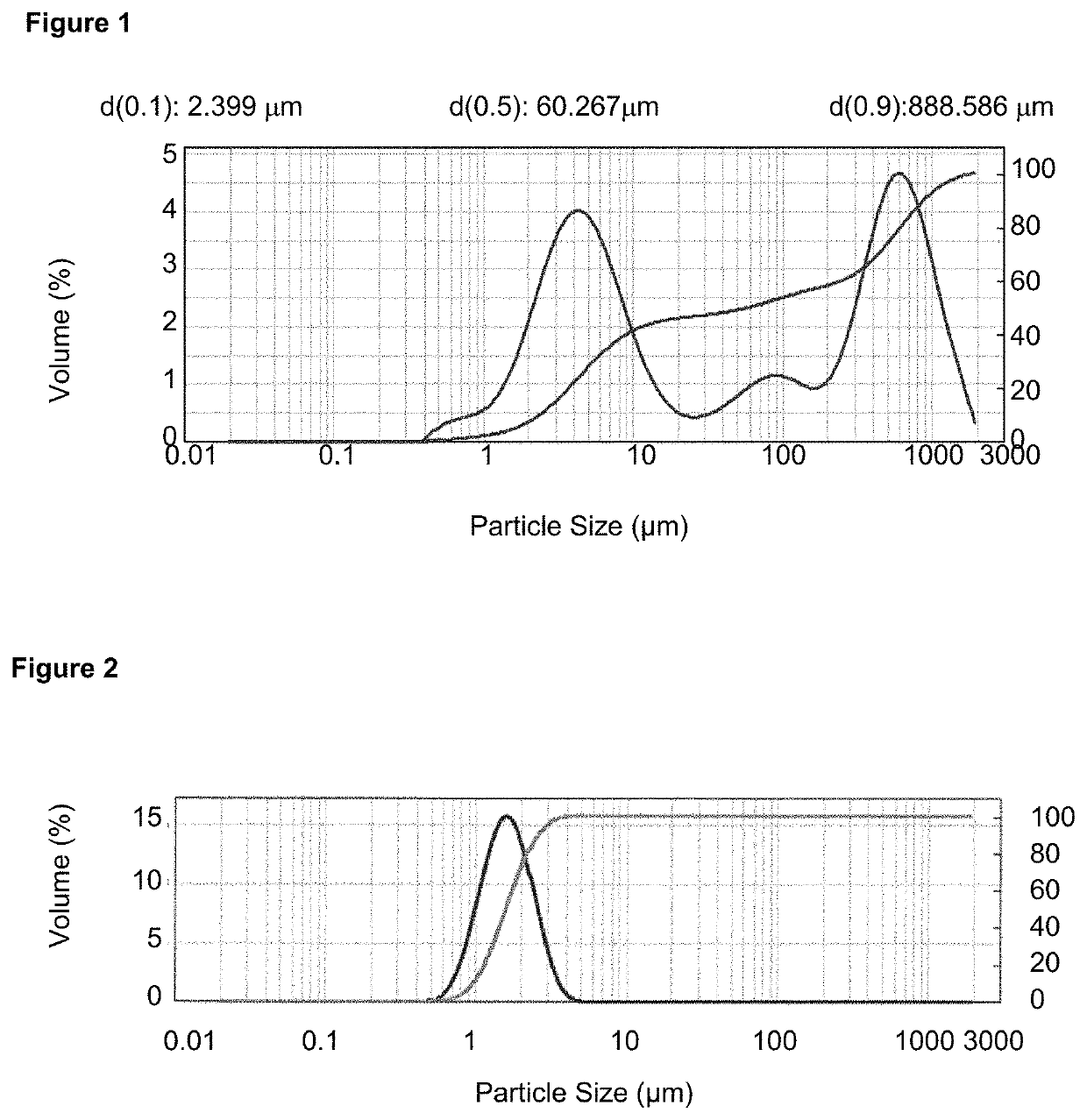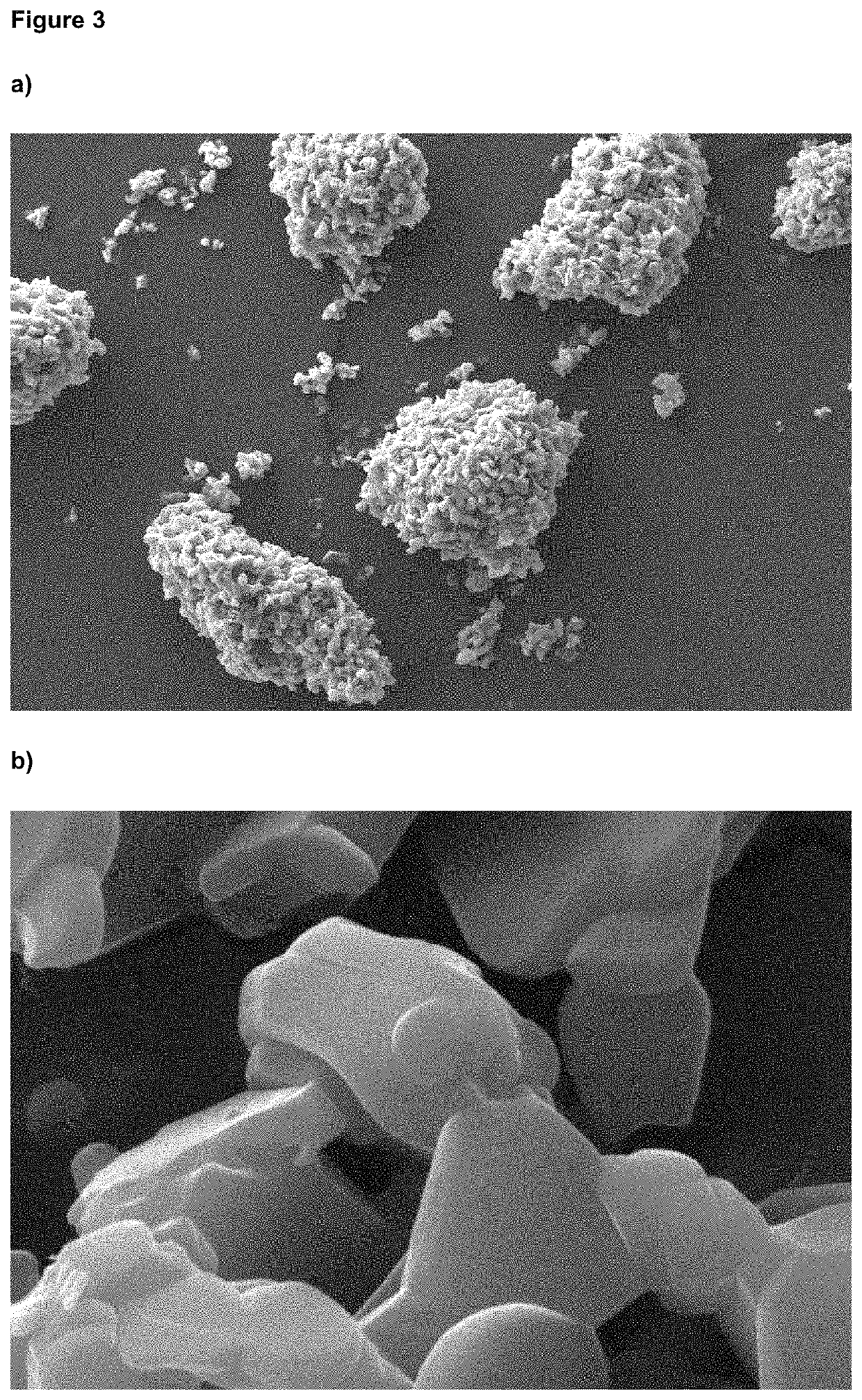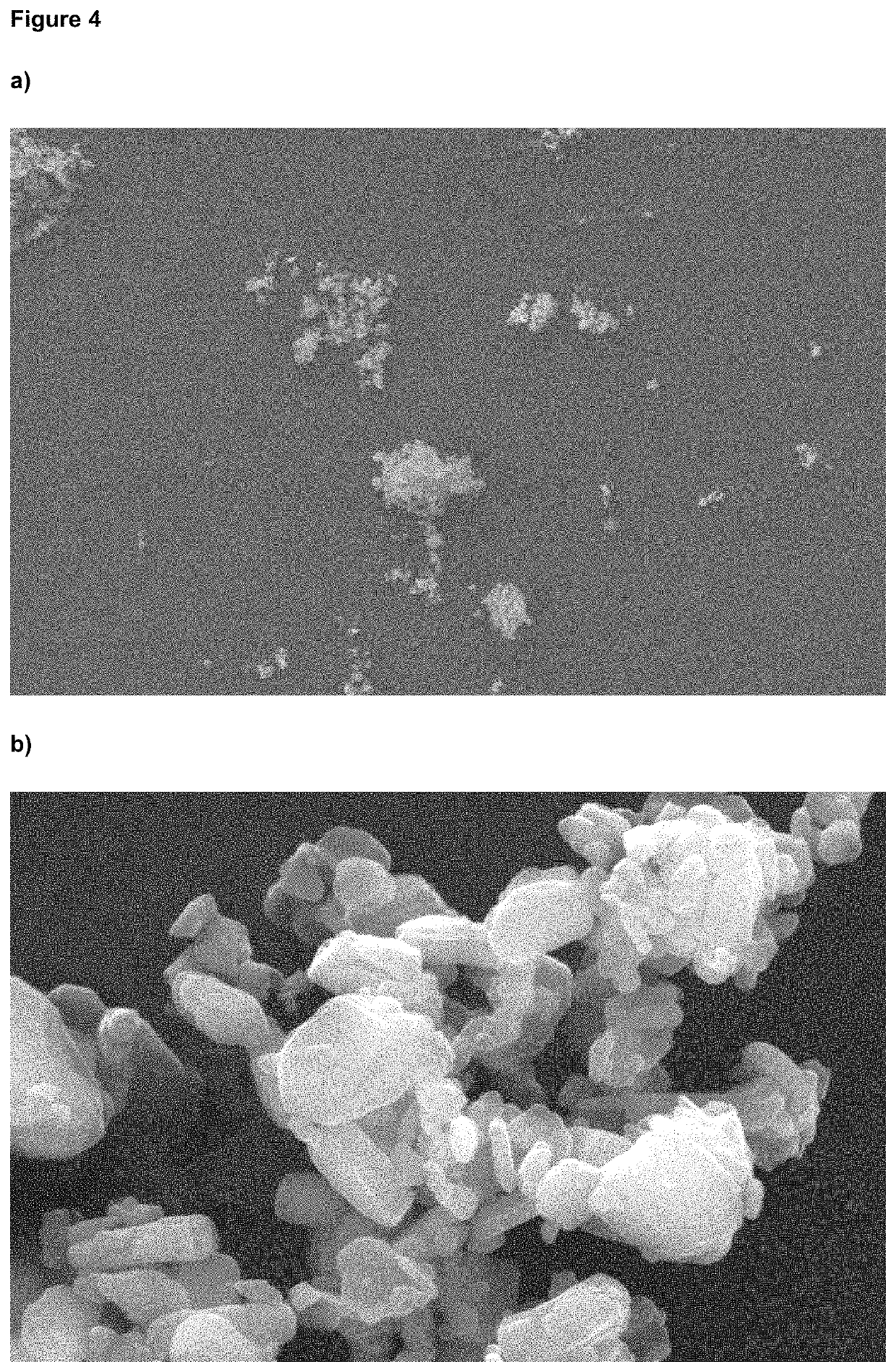Particle size stabilization process
a technology of particle size stabilization and particle size, which is applied in the direction of heterocyclic compound active ingredients, drug compositions, drug forms, etc., can solve the problems of affecting the chemical and polymorphic stability of micronized glycopyrronium bromide, and affecting the bioavailability of drugs. , to achieve the effect of improving the chemical and polymorphic stability of micronized glycopyrronium, increasing the temperature, and enhancing the phys
- Summary
- Abstract
- Description
- Claims
- Application Information
AI Technical Summary
Benefits of technology
Problems solved by technology
Method used
Image
Examples
example 2
on of Glycopyrronium Bromide
[0086]400 g of crystalline glycopyrronium bromide was micronized at room temperature in an ALPINE Pharma Multi-Processing System 100 AFG / 100 AS micronizer with integrated GLOVE-BOX at a micronization pressure of 5 bar obtaining a particle size distribution D50 1.51 μm and D90 3.55 μm.
[0087]The micronized product was spread on a tray and placed into a vacuum oven (Kendro model VT 6130P-BL) at a temperature of 130° C. and vacuum conditions (pressure of below 50 mbar) without agitation or movement. The conditions were maintained for 4 hours.
[0088]No amorphous content was detected, as determined by DVS and no agglomerated material was observed. The particle size distribution determined by LDS (D50 1.45 μm and D90 3.39 μm) remained stable after storage at 25° C. for (at least) 1 month, as indicated in FIG. 2. The micronized and stabilized glycopyrronium bromide showed no changes in chemical and polymorphic purity, even after prolonged storage at 25° C.
example 3
on of Glycopyrronium Bromide
[0089]400 g of crystalline glycopyrronium bromide was micronized at room temperature in an ALPINE Pharma Multi-Processing System 100 AFG / 100 AS micronizer with integrated GLOVE-BOX at a micronization pressure of 5 bar obtaining a particle size distribution D50 1.51 μm and D90 3.55 μm.
[0090]The micronized product was spread on a tray and was placed into an oven (Kendro model VT 6130P-BL) at a pressure of 1 atm and at a temperature of 130° C. without agitation or movement. The conditions were maintained for 4 hours.
[0091]No amorphous content was detected, as determined by DVS, and no agglomerated material was observed. The PSD remained stable after storage at 25° C. for (at least) 1 month, as determined by LDS (D50 1.46 μm and D90 3.36 μm). The micronized and stabilized glycopyrronium bromide showed no changes in chemical and polymorphic purity.
example 4
on of Glycopyrronium Bromide
[0092]400 g of crystalline glycopyrronium bromide was micronized at room temperature in an ALPINE Pharma Multi-Processing System 100 AFG / 100 AS micronizer with integrated GLOVE-BOX at a micronization pressure of 5 bar obtaining a particle size distribution D50 1.51 μm and D90 3.55 μm.
[0093]The micronized product was spread on a tray and was placed into a vacuum oven Kendro model VT 6130P-BL at a temperature of 130° C. and vacuum conditions (pressure of below 50 mbar) without agitation or movement. The conditions were maintained for 6 hours.
[0094]No amorphous content was detected, as determined by DVS, and no agglomerated material was observed. The PSD remained stable after storage at 25° C. for (at least) 1 month, as determined by LDS (D50 1.45 μm and D90 3.26 μm). The micronized and stabilized glycopyrronium bromide showed no changes in chemical and polymorphic purity.
PUM
| Property | Measurement | Unit |
|---|---|---|
| particle size distribution | aaaaa | aaaaa |
| temperature | aaaaa | aaaaa |
| temperature | aaaaa | aaaaa |
Abstract
Description
Claims
Application Information
 Login to View More
Login to View More - R&D
- Intellectual Property
- Life Sciences
- Materials
- Tech Scout
- Unparalleled Data Quality
- Higher Quality Content
- 60% Fewer Hallucinations
Browse by: Latest US Patents, China's latest patents, Technical Efficacy Thesaurus, Application Domain, Technology Topic, Popular Technical Reports.
© 2025 PatSnap. All rights reserved.Legal|Privacy policy|Modern Slavery Act Transparency Statement|Sitemap|About US| Contact US: help@patsnap.com



